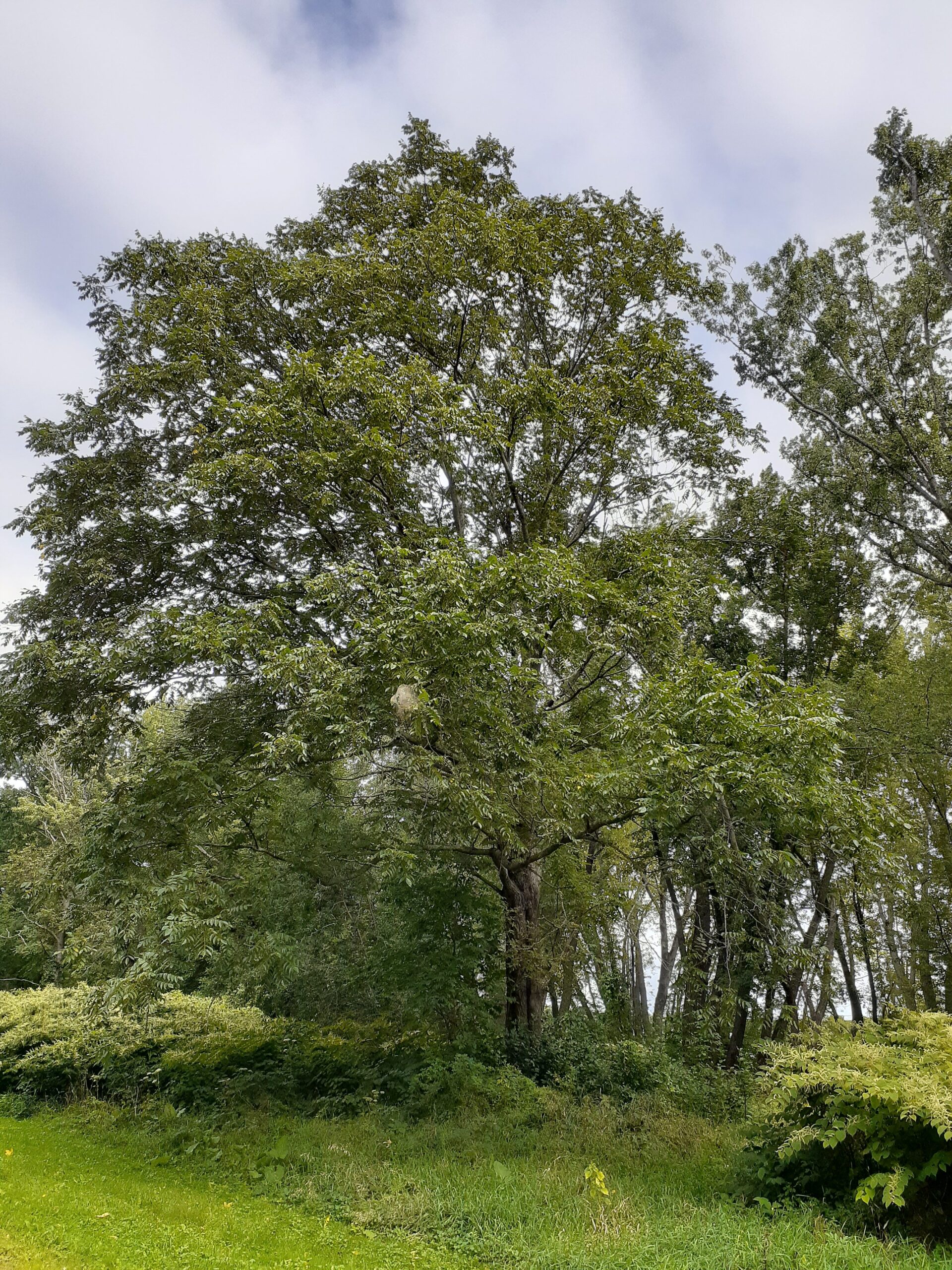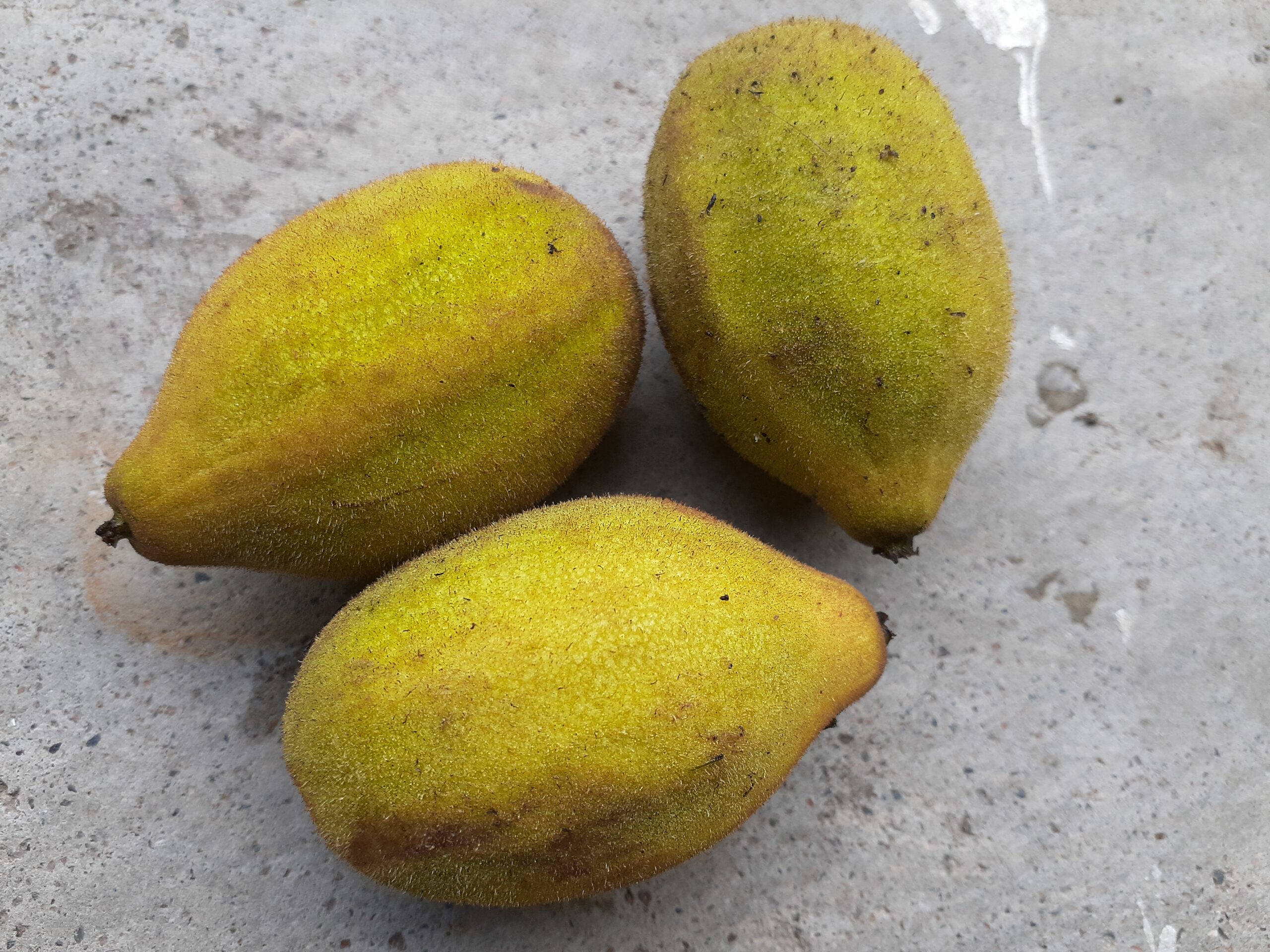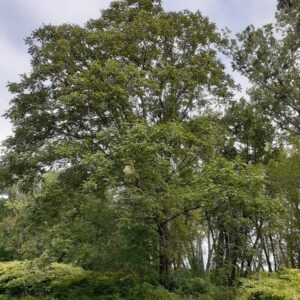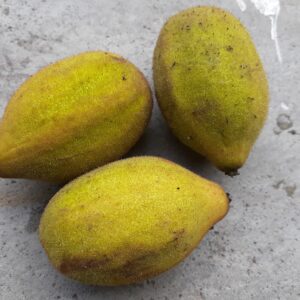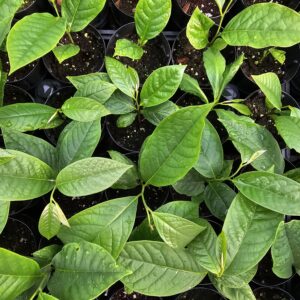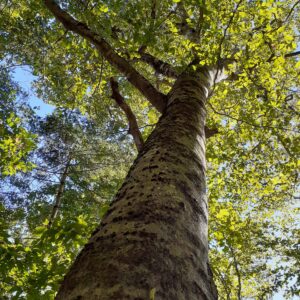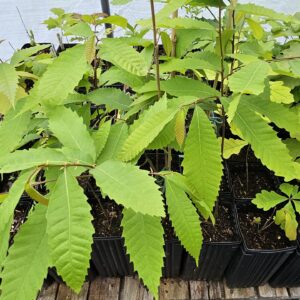Butternut
(White Walnut)
Juglans Cinerea
Found growing naturally in the lowlands of central New Brunswick along the Saint John River system. Popular for its edible nuts and valued for its wood in carpentry. The tree takes about 20 years for fruit production to begin. It is susceptible to a fatal fungal disease known as Butternut Canker which is believed to have arrived from Asia around the middle of last century. It is thought that some trees have genetically greater resistance than others. All seeds were personally collected from natural stands of large healthy specimens. Planted trees in isolation from natural stands will improve chances of survival. Tree parts and especially roots produce a chemical called juglone that inhibits growth of some plants in the root zone. Trees have both male and female flowers and are wind pollinated. Planting two or more trees will improve seed crop quantity through cross pollination. Mast seed crops occur every 2 to 3 years.
Additional information
| Foliage | Deciduous |
|---|---|
| Locale | Native to New Brunswick, Native to North America |
| Height | Large (60-100ft) |
| Width | Wide |
| Form | Round |
| Growth Rate | Moderate |
| Longevity | Moderate (50 to 100 years) |
| Hardiness Zones * | 3, 4, 5 |
| Sun Exposure | Full Sun (over 6 hrs), Partial Sun (4 to 6 hrs) |
| Soil Preferences * | Moist, Slightly Acidic, Well Draining |
| Soil Tolerances | Clay, Dry, Slightly Alkaline |
| Other Tolerances | Occasional Drought, Occasional Flooding |
| Ornamental Interest | Leaves (shape) |
| Wildlife Value | Birds (fruits/seeds), Small Mammals (fruits/seeds) |
| Human Value | Carpentry (wood), Edible (seed) |
| Seed Collection | Personally in NB |
| Planting Considerations | Allelopathic, Intolerant of Full Shade, Intolerant of Road Salt, Messy Leaf Litter, Messy Seed Litter |


